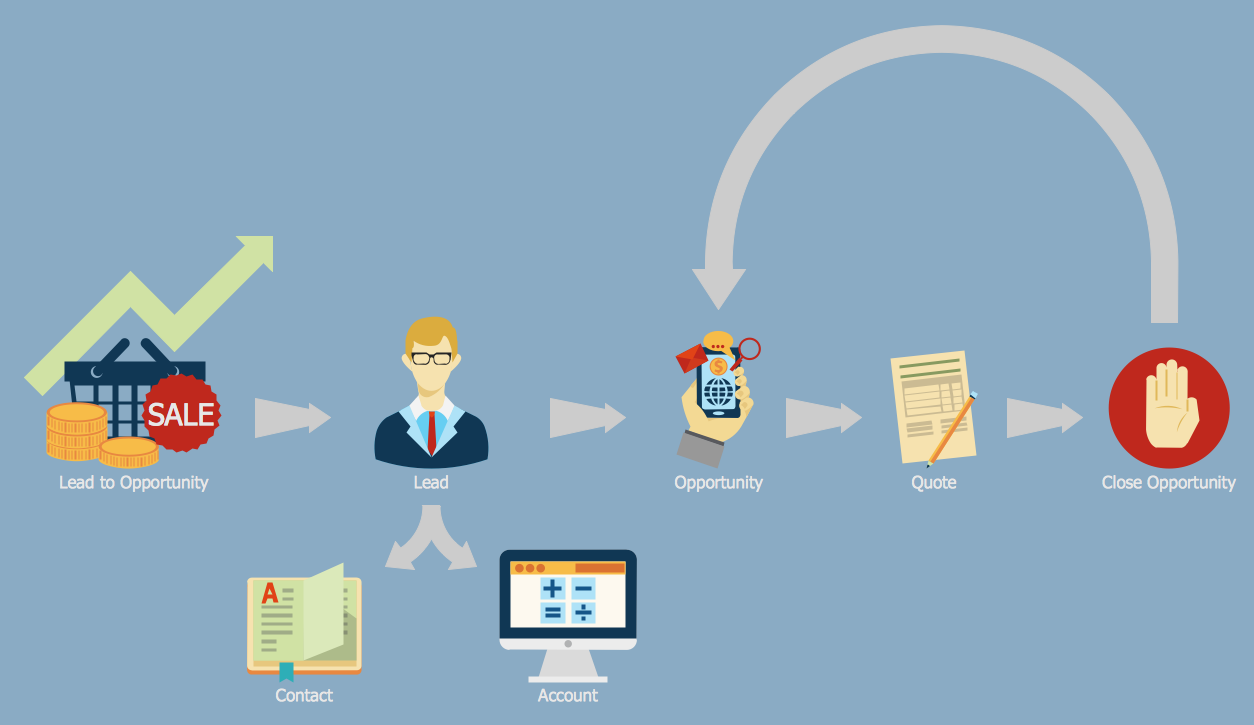Remember the 4 Ps from your intro to marketing class? Price, product, promotion and place have been used over the past century by marketers as an organizing framework for the core elements of marketing. The 4 Ps were created in the 1940s against a backdrop of five and dime stores, and more recently, big box retailers. They’ve been used as a way to differentiate similar products mass produced along factory lines – think of the Ford model Ts where over 15 million were produced in and around Detroit throughout the 1920s.*
“While the 4Ps have stood the test of time – times are changing. Old material processes have given way to digital conveniences as marketers start to question these core elements under the spotlight of search, display and social. One of the core elements – place – has literally disappeared as the internet redefines shopping, replacing physical places with digital spaces.”
In their latest trends report, Deloitte consultants project that by 2020 the lion’s share of consumer spend and activity—promotion, search, and procurement—will take place over digital channels. Traditional marketing and channel economies of scale will dissipate, with many more paths to the consumer and many more convenient options for consumers to make initial and recurring purchases.**
There are some new Ps in the air now, creating a new stage for marketers as they start to rethink their campaigns in the digital era, especially as it pertains to the heart of digital marketing, search.
RELATED ARTICLE: USP 101: How to Uncover Your Unique Selling Proposition
Pervasive & Persistent
Historically, products were sold on a shelf with a price tag in a store. Consumers shopped in physical places that defined and shaped the consumer/retailer relationship. Today, the internet has forced marketers to rethink their business models as shelves, price tags and even some brick-n-mortar stores have all but disappeared. The concept of place has evolved into a pervasive and persistent presence around us that enables consumers to shop anywhere, at any time, anyhow they want. The internet and more specifically, the power of search, maintains a pervasive presence in our lives as it continues to surface in new forms – on laptops, tablets, phones, home smart speakers and even in new mixed reality devices. Put simply, wherever you are, so will be the power of search.
As the original “P” of place comes under scrutiny, so does some of its core components. Concepts such as store hours, waiting-in-line and cash are becoming obsolete in this new marketplace defined by a pervasive and persistent access to search. For instance, today’s shoppers are able to order paper towels with a simple voice command through their home smart speaker, try on clothes virtually through a mixed reality device and pre-order coffee drinks and food so that it is waiting for pick-up when they arrive. Even the brick-n-mortar experience has changed as beacon technology enables retailers to reach their customers at highly opportune moments such as passing a store display. Customers can receive alerts, personalized coupons and interact through their smart phones.
Retailers must rethink the possibilities as they engage in deeper, always-on relationships with their customers that span physical and digital realms. Even the notion of a physical product dissipates in the digital arena where speed, convenience and accessibility are placed at such a premium. Is Jimmy John’s just delivering sandwiches? Or is it a freaky fast ability to curb your hunger? What is the actual product? And what new products will materialize in this new pervasive “marketspace”?
RELATED ARTICLE: The e-payment evolution; the modern payment regime in Ghana
Personal
The old Ps worked very well in the past century for promoting mass-produced products and democratizing staple goods such as cars and personal computers. But today’s consumer has come to expect a high degree of personalization. “Mass” is indeed a 4-letter word as it pertains to mass production, mass marketing and mass promoting. Like oil and water, mass marketing simply doesn’t mix with the internet.
The internet and search grew up around the very principle of data analysis and personalization. While the internet is an ocean of information, personalization is the bridge of intent that connects us with relevant, meaningful interactions. With each new development within search, search has become more and more personalized. From day parting to geographic targeting to mobile and voice and remarketing, search is on a quest for complete personalization. The end goal is to deliver one highly relevant result instead of 1,324,343 less relevant results. Search continues to get smarter as it leverages machine learning to quickly process massive amounts of data and deliver smarter, more contextualized results. It relies on search habits, location and self-reported information as it moves in the direction of artificial intelligence.
Take a pizza for example. In the past, early engines would have returned a “pizza” keyword search with a laundry list of local and non-local pizza places. Today’s searchers are able to say “order pizza” on their home smart speaker which connects with a Dominos app to deliver you a pizza based on pre-populated information. And future searchers will be able to engage in full conversations with chatbots to order the exact pizza of their choice.
Today’s retailers should be razor focused on personalization. According to the latest eMarketer report, the 3 top technology trends that will have the biggest impact on marketing companies by 2020 are mobile, personalization and the internet of things.** Consumers will be noticing fewer and fewer mass mailers and more personalized interactions through remarketing, chatbots and ultimately, personal assistants.
RELATED ARTICLE: Technology as a tool for total customer service
Predictive
Prediction really relies on one thing and one thing only. Data. The more data you have, the better you can predict an outcome. While early 4P marketers conducted and valued market research, there are limits to what a single mind can do with paper, pencil and fragmented data – limits which greatly expanded mid-century with Alan Turing’s pivotal contributions to the fields of machine learning and artificial intelligence. His invention, the Turing machine, helped scientists understand the abilities and boundaries of mechanical computation. Today, data has become a marketer’s best friend and worst nightmare as we struggle to sort through mountains of information and decipher meaning. Machine learning helps to illuminate patterns impossible to see with the naked eye, empowering marketers with predictive capability and driving the features of future search.
Predictive capability is an outcome of machine learning and a core component of future search. Search today is just starting to leverage machine learning for smarter interactions. It can decipher intent based on location, device, query words, search habits, etc. to deliver hyper-relevant results. For instance, a search for pizza on your mobile phone probably signals a pick-up/eat-in order while a search on a laptop signals delivery. The level of prediction in search is in direct correlation to the amount of data we provide. The more we allow access to our histories, calendars, location, Fitbits, etc., the more magical the results as it infuses us with superhuman intelligence – knowledge of a traffic jam up ahead, a delay in our upcoming flight and even early detection of diseases.
RELATED ARTICLE: IT trends for 2017
Prediction also gives retailers superhuman powers. New features within search such as customer match enables marketers to find new customers that are perfectly suited to their products. It matches like-minded YouTube and email users to your current customer base. And retailers can delight their customers in new ways. For instance, health insurance companies have started to reduce premiums for customers who regularly attend the gym. It’s hard to predict the exact usage of prediction in search, but all signs are pointing towards a go …
Privacy
As we analyze these new Ps and look to the future of search, we would be remiss not to address the critical role of privacy in digital marketing. It is important that consumers have full access and control over their personal data and can adjust their user experience based on their comfort level (such as blocking and deleting cookies). Advancements within personalization and prediction do require a heightened level of user intimacy. Users that prefer higher levels of innovation will engage with technology in new ways that support meaningful, interactive engagement. All technology providers are required to share their privacy policies so that users have full transparency into the user/provider relationship. Here at Microsoft, privacy matters are of the upmost concern as we continue to prioritize privacy in search experiences, as well as across our ecosystem. Our privacy commitment is built on six key principles – control, transparency, security, strong legal protections, no content-based targeting and, ultimately, benefits to you.
Marketing continues to unfold in the digital arena. While 92% of CPG executives say e-commerce is strategic for sales, only 43% thought their company had a clear, well-understood digital commerce strategy, indicating a substantial gap between e-commerce’s perceived importance and consumer product companies’ readiness to execute.** It’s imperative that today’s marketers bridge that gap, become aware of their online identity and learn to leverage the new Ps in the digital era. We’ve come a long way from a logo on a product or a handshake at a store. Marketing today requires something bigger – a promise to your customers that you will continue to explore and push technological boundaries to build ongoing, meaningful relationships that will not only deliver better products, but will enhance their overall lives.
Credit: Huffington Post






